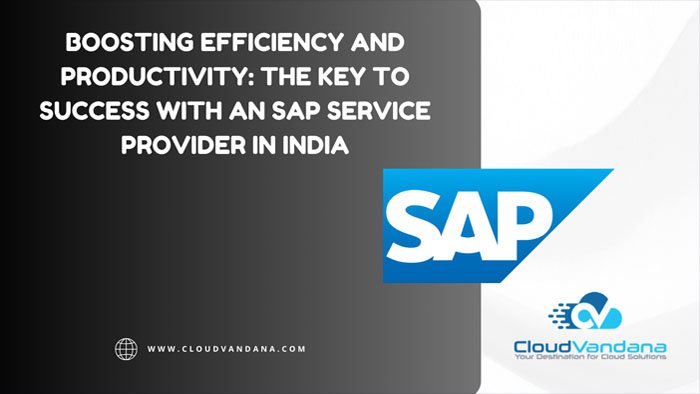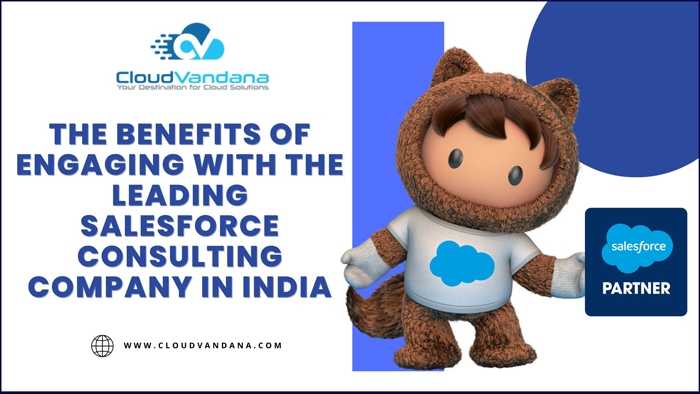Improved Efficiency and ROI: How an Oracle Service Provider Can Transform Your Business

If you want to revolutionize your business and achieve maximum efficiency and ROI, look no further than an Oracle service provider. With their expertise and cutting-edge solutions, they can transform your business operations and help you reach new heights of success. Whether you’re a small startup or a large enterprise, an Oracle service provider can offer tailored solutions to meet your specific needs. From implementing and managing Oracle software to optimizing your existing systems, they have the knowledge and experience to drive significant improvements in your business processes. By harnessing the power of Oracle’s innovative technologies, you can streamline operations, automate manual tasks, and enhance collaboration across departments. This not only saves time and resources but also ensures that your business operates at its full potential. Furthermore, an Oracle service provider can help you maximize your return on investment. By leveraging their expertise, you can make informed decisions that align with your business goals and drive revenue growth. Don’t let inefficiencies hold your business back. Partner with an Oracle service provider today and experience the transformative power of their solutions. The importance of efficiency and ROI in business Efficiency and ROI are two critical components that businesses must prioritize to remain competitive. Efficiency refers to how well a business utilizes its resources to achieve its objectives. This includes streamlining operations, reducing costs, and improving productivity. ROI, on the other hand, measures the return on investment that a business generates from its activities. Maximizing efficiency and ROI can significantly impact a business’s success. Efficient operations lead to increased productivity, reduced costs, and improved customer satisfaction. Similarly, a higher ROI indicates that a business is generating more revenue from its investments. Common challenges faced by businesses While achieving efficiency and ROI is essential for success, businesses often face common challenges that hinder their progress. These challenges include manual processes, siloed departments, and outdated technologies. These issues can lead to inefficiencies, errors, and delays, reducing productivity and increasing costs. Additionally, businesses may struggle to make informed decisions regarding their investments. Without proper knowledge and expertise, they may invest in technologies or strategies that do not align with their goals, wasting resources and reducing ROI. How an Oracle service provider can help transform your business An Oracle service provider specializes in providing cutting-edge solutions to help businesses optimize their operations and maximize ROI. They have the knowledge and expertise to address common business challenges and offer tailored solutions to meet specific needs. Oracle service providers can help businesses implement and manage Oracle software, optimize existing systems, and provide ongoing support and maintenance. This includes automating manual processes, improving collaboration across departments, and providing real-time data and insights to inform decision-making. By leveraging Oracle’s innovative technologies, businesses can achieve significant improvements in their operations. This not only saves time and resources but also enables them to operate at their full potential. Key services offered by Oracle service providers Oracle service providers offer a range of services to help businesses achieve their goals. Some of the key services include: These services are designed to address common business challenges and help businesses achieve their specific objectives. Choosing the right Oracle service provider for your business When choosing an Oracle service provider, there are several factors to consider. First, ensure that the provider has experience working with businesses similar to yours. They should have a deep understanding of your industry and the specific challenges you face. Additionally, consider their expertise in Oracle technologies and their ability to provide tailored solutions to meet your specific needs. Look for providers that offer ongoing support and maintenance to ensure that your systems remain up-to-date and optimized. Implementing Oracle solutions: Best practices and considerations Implementing Oracle solutions requires careful planning and execution. To ensure a successful implementation, consider the following best practices: Measuring the impact of Oracle service providers on efficiency and ROI Measuring the impact of Oracle service providers on efficiency and ROI is essential to determine the success of your investment. Consider using key performance indicators (KPIs) to track improvements in productivity, cost savings, and revenue growth. Additionally, gather feedback from employees and customers to identify areas for improvement. Conclusion: Unlocking your business’s full potential with an Oracle service provider In today’s competitive business landscape, maximizing efficiency and ROI is essential for success. Whether you’re a small startup or a large enterprise, partnering with an Oracle service provider in India like CloudVandana can help transform your operations and drive significant improvements in your business processes. By harnessing the power of Oracle’s innovative technologies, you can streamline operations, automate manual tasks, and enhance collaboration across departments. This saves time and resources and ensures that your business operates at its full potential. Call us now for a detailed discussion. Request a Free Consultation YOU MIGHT ALSO LIKE
Unlocking Success: The Key Principles of Enterprise Agile Transformation

Drive organizational excellence with Enterprise Agile Transformation. Harness the power of agile methodologies to enhance efficiency, collaboration, and adaptability on an enterprise scale. Navigate change confidently, optimize workflows, and cultivate a culture of agility for sustained success in a rapidly evolving business environment. Explore our transformative solutions for a future-ready enterprise. What is Enterprise Agile Transformation? At its core, enterprise agile transformation entails adopting agile principles and practices at an organizational level. Unlike traditional hierarchical structures, this transformative approach decentralizes decision-making, encourages cross-functional collaboration, and promotes iterative development cycles. By embracing agility, large enterprises can effectively respond to market shifts, enhance product development processes, and achieve greater customer satisfaction. The Agile Manifesto The Agile Manifesto serves as the foundation for enterprise agile transformation, outlining four key values that prioritize individuals and interactions over processes and tools, working software over comprehensive documentation, customer collaboration over contract negotiation, and responding to change over following a plan. This mindset shift fosters a dynamic and adaptable work environment where teams can thrive. Scaling Agile Practices Scaling agile practices across an entire enterprise requires careful planning and execution. Several well-established frameworks, such as SAFe (Scaled Agile Framework), LeSS (Large-Scale Scrum), and Nexus, provide guidance on scaling agile methodologies. These frameworks enable organizations to synchronize and align multiple agile teams while maintaining a cohesive vision. Benefits of Enterprise Agile Transformation Embracing an enterprise-wide agile transformation yields numerous benefits that contribute to an organization’s overall success. Some notable advantages include: Challenges in Enterprise Agile Transformation While the benefits of enterprise agile transformation are undeniable, it is important to acknowledge the challenges that organizations may face during the transition phase. These challenges include: Conclusion Enterprise agile transformation is a dynamic approach that empowers organizations to adapt and thrive in today’s rapidly changing business landscape. By adopting agile principles and scaling their practices throughout the enterprise, organizations can unlock numerous benefits such as improved flexibility, increased collaboration, higher employee satisfaction, and enhanced product quality. While challenges may arise during the transformation process, addressing cultural resistance, managing complexity, and fostering organizational alignment can help organizations realize the true potential of enterprise agile transformation. So, embrace the agility and embark on a transformative journey to position your enterprise at the forefront of innovation and success! Call CloudVandana today to experience the best practices. Request a Free Consultation YOU MIGHT ALSO LIKE
Unlocking the Key to Success: The Ultimate Guide to Hiring Remote Developers for Your Business

Hiring remote developers for your business can be a strategic move to access a broader talent pool and potentially save costs. However, finding the perfect fit requires a thoughtful and comprehensive approach. Here’s a step-by-step guide to help you hire remote developers effectively: Hiring Remote Developers Define Your Requirements: Start by clearly defining the skills, experience, and qualifications you’re looking for in a remote developer. Consider the specific role, technology stack, and project requirements. Create a Detailed Job Description: Write a comprehensive job description that outlines the role, responsibilities, required skills, and the type of projects the developer will work on. Be transparent about remote work expectations. Choose the Right Platforms: Use online job platforms like LinkedIn, GitHub, Stack Overflow Jobs, or specialized remote job boards like We Work Remotely, Remote. co, or FlexJobs to post your job openings. Leverage Your Network: Reach out to your professional network, industry contacts, and employees for referrals. Recommendations from trusted sources can help you find qualified candidates. Screen Resumes and Portfolios: Review resumes and portfolios to assess candidates’ qualifications, experience, and relevant projects. Look for a track record of remote work and experience with remote collaboration tools. Technical Interviews: Conduct technical interviews to evaluate a candidate’s coding skills and problem-solving abilities. This can be done through video calls or coding challenges. Cultural Fit Interviews: Assess a candidate’s cultural fit and soft skills through interviews. Communication and collaboration skills are crucial for remote work. Check References: Contact references provided by the candidates to verify their work history and performance. Evaluate Remote Work Skills: Remote developers should be self-motivated, proactive, and capable of managing their own time. Ask about their remote work experience and tools they are familiar with. Test Communication and Collaboration: Conduct a mock remote collaboration task or project to evaluate a candidate’s ability to work effectively in a distributed team. Assess Time Zone Compatibility: Ensure that the candidates’ time zones align with your team’s core working hours. Overlapping work hours are essential for collaboration. Discuss Compensation and Benefits: Be transparent about the salary and benefits you’re offering. Ensure it’s competitive with the market and provides incentives for remote developers. Trial Period or Contract-to-Hire: Consider starting with a trial period or a contract-to-hire arrangement to assess the developer’s fit for your team and projects. Legal and Compliance Considerations: Understand the legal aspects of hiring remote developers, such as tax implications, employment laws, and contracts, and ensure compliance with them. Onboarding and Orientation: Provide a thorough onboarding process and orientation to make remote developers feel part of the team from day one. Remote Collaboration Tools: Make sure your team uses collaboration tools such as Slack, Zoom, Trello, and project management software to facilitate efficient remote work. Performance Metrics: Establish clear performance metrics and KPIs for remote developers, ensuring they understand how their work contributes to the overall goals of the company. Regular Communication: Maintain regular communication with remote developers through scheduled check-ins, team meetings, and updates. Address any issues promptly. Feedback and Growth: Provide feedback, mentoring, and opportunities for growth to help remote developers advance in their careers and contribute more to your business. Security and Data Privacy: Ensure that remote developers understand and comply with your company’s data security and privacy policies. Remember that finding the perfect fit may take time and a bit of trial and error. Remote developers can greatly benefit your business when integrated effectively into your team and workflow, but the process of hiring and onboarding them requires careful consideration and management. Contact CloudVandana today and enjoy a streamlined onboarding experience with skilled remote developers for the enhancement of your organization. Call us today and share your requirements with us. Request a Free Consultation YOU MIGHT ALSO LIKE
Boosting Efficiency and Productivity: The Key to Success with an SAP Service Provider in India

Boosting efficiency and productivity with an SAP service provider in India can be a key driver of success for businesses that rely on SAP (Systems, Applications, and Products in Data Processing) solutions for their operations. SAP service providers in India offer a wide range of services, including implementation, customization, support, and maintenance of SAP software. Here are some strategies and best practices to enhance efficiency and productivity when working with an SAP service provider in India: Clear Communication: Establish clear communication channels and expectations from the beginning. Ensure both parties understand the project scope, objectives, timelines, and deliverables. Maintain open and regular communication to address issues promptly and keep the project on track. Define Specific Goals: Clearly define your business goals and objectives for the SAP implementation or support project. What do you aim to achieve with the SAP system? Ensure that your SAP service provider understands your business processes and requirements to tailor their services accordingly. Experienced Team: Choose an SAP service provider in India with a team of experienced consultants and developers. Look for certifications and expertise in the specific SAP modules relevant to your business. Robust Project Management: Implement robust project management practices to track progress, allocate resources efficiently, and manage risks. Use project management tools and methodologies to ensure tasks are completed on time and within budget. Customization vs. Standardization: Evaluate the need for customization carefully. While SAP allows for extensive customization, it can increase project complexity and cost. Consider standardizing processes where possible. Customization should align with unique business requirements that provide a competitive advantage. User Training and Adoption: Invest in comprehensive training programs for your staff to ensure they can effectively use SAP solutions. Encourage user adoption by involving employees in the project and addressing their concerns. Continuous Improvement: Establish a culture of continuous improvement. Regularly assess and optimize your SAP processes to adapt to changing business needs. Work closely with your SAP service provider to identify areas for enhancement. Data Quality and Integration: Ensure data quality and consistency across the SAP system. Data integration with other business systems is crucial for seamless operations. Regularly audit and clean up data to maintain system performance and accuracy. Support and Maintenance: Define SLAs (Service Level Agreements) for support and maintenance with your SAP service provider. Have a well-defined process for reporting and resolving issues promptly. Security and Compliance: Prioritize data security and compliance with industry regulations. Regularly update and patch your SAP system to mitigate security risks. Engage with your SAP service provider to conduct security assessments and implement best practices. Cost Management: Keep a close eye on project costs and ensure they align with the budget. Discuss any cost overruns with your service provider and find cost-effective solutions. Long-term Partnership: Consider your SAP service provider as a long-term partner. A strong partnership can lead to ongoing support, upgrades, and optimization of your SAP environment. Boosting efficiency and productivity with an SAP service provider in India requires a strategic approach, clear communication, and a commitment to continuous improvement. By following these best practices, businesses can maximize the benefits of SAP solutions and achieve long-term success. Are you looking for a reputed SAP service provider to enhance your business? Please feel free to schedule a consultation call with CloudVandana and take your business to the next level. Call Now. Request a Free Consultation YOU MIGHT ALSO LIKE
The Benefits of Engaging with the Leading Salesforce Consulting Company in India

Engaging with a leading Salesforce consulting company in India can offer numerous benefits for businesses looking to implement, optimize, or expand their Salesforce solutions. Salesforce is a powerful Customer Relationship Management (CRM) platform, and working with experts can help you leverage its full potential. Here are some of the benefits of engaging with a top Salesforce consulting company in India: Expertise and Experience: Leading Salesforce consulting companies in India typically have a team of certified and experienced consultants who are well-versed in Salesforce technologies and best practices. They bring a wealth of knowledge and expertise to help you make the most of the platform. Customization: Salesforce is highly customizable to meet your unique business needs. Consultants can tailor Salesforce to align with your specific processes, workflows, and requirements, ensuring that it serves your business effectively. Implementation and Integration: Consultants can assist with the smooth implementation of Salesforce, including data migration and integration with other systems (e.g., ERP, marketing automation, e-commerce) to create a unified view of your customer data. Optimization: If you are already using Salesforce, consultants can assess your current setup and identify areas for improvement. They can fine-tune your system to increase efficiency, productivity, and ROI. Training and Support: Leading Salesforce consulting companies often provide training to your team, ensuring they are proficient in using the platform. They also offer ongoing support to address any issues, updates, or enhancements. Cost Savings: By engaging with experts, you can avoid costly mistakes and rework. Consultants can help you make informed decisions, optimize your processes, and minimize wastage of resources. Scalability: As your business grows, Salesforce can scale with you. Consultants can help you plan for scalability, ensuring that your CRM system can accommodate increasing data and user demands. Security and Compliance: Salesforce consulting companies are well-versed in security best practices and can help you set up robust security measures to protect your customer data and ensure compliance with regulations like GDPR or HIPAA. Access to Latest Features: Salesforce regularly releases updates and new features. Consultants can keep you up-to-date with the latest advancements and help you leverage them to stay competitive. Strategic Guidance: Consultants can provide strategic guidance on how to use Salesforce as a tool for achieving your business goals. They can help you align your CRM strategy with your overall business strategy. Measurable ROI: Working with experts can result in a measurable return on investment (ROI) by improving sales, marketing, and customer service processes, ultimately leading to increased revenue and customer satisfaction. Global Reach: Many Indian Salesforce consulting companies serve clients globally, giving you access to a diverse talent pool and cost-effective solutions. Innovation and Best Practices: Leading consulting firms stay updated on industry trends, best practices, and emerging technologies. They can introduce innovative solutions and strategies to enhance your Salesforce implementation. In conclusion, engaging with a top Salesforce consulting company in India like CloudVandana can be a strategic move for businesses seeking to harness the full potential of Salesforce. Their expertise, experience, and commitment to excellence can improve business operations, increase customer satisfaction, and, ultimately, lead to tremendous success. Call Now for a free consultation. Request a Free Consultation YOU MIGHT ALSO LIKE
Choosing the Right Software Architecture Pattern for Your Project: A Step-by-Step Guide

In today’s rapidly evolving technological landscape, selecting the right software architecture pattern for your project has become essential to its success. With abundant options available, it can be overwhelming to determine which architecture pattern aligns best with your project’s specific requirements. This step-by-step guide aims to simplify the decision-making process, enabling you to choose the perfect software architecture pattern for your project’s success. Assess Your Project’s Requirements Before diving into the multitude of software architecture patterns, assessing your project’s unique requirements is crucial. Take the time to thoroughly understand your project’s specific objectives, scalability needs, performance expectations, and budgetary constraints. This initial step will guide the decision-making process, ensuring that the chosen architecture pattern aligns seamlessly with your project’s needs. Identify the Functional and Non-Functional Requirements Begin by identifying the core functional requirements your application must fulfill. These requirements outline the essential features and functionalities the software should provide. Simultaneously, consider the non-functional requirements that dictate how the software should perform, such as scalability, security, reliability, and maintainability. By distinguishing between these two types of requirements, you understand the software’s purpose and can focus on architecture patterns that address these needs effectively. Evaluate Technical Constraints and Considerations No software project exists in isolation; thus, it is essential to consider the technical constraints and considerations specific to your project. Evaluate factors such as the programming languages, frameworks, and libraries you plan to use, as well as any existing infrastructure that needs integration. These technical considerations play a significant role in narrowing down the suitable software architecture patterns for your project. Understand Different Software Architecture Patterns Once you have a clear understanding of your project’s requirements, it’s time to explore various software architecture patterns. Each pattern offers its unique advantages and disadvantages, making it crucial to examine them thoroughly before making a decision. Monolithic Architecture The monolithic architecture, a traditional and straightforward approach, is characterized by an all-in-one structure where the entire application is built as a single unit. This architecture pattern simplifies development but lacks the flexibility to scale individual components independently. Consider choosing a monolithic architecture pattern for small projects with straightforward requirements and limited scalability needs. Microservices Architecture The microservices architecture breaks down the application into small, loosely coupled services that can be developed, deployed, and scaled independently. This pattern promotes modularity, flexibility, and fault tolerance, making it suitable for large, complex projects that require scalability and independent service management. Event-Driven Architecture Event-driven architecture focuses on the flow of events or messages between different components of an application. Events trigger actions, enabling loose coupling and interoperability between various parts of the system. This pattern is beneficial for projects that involve a high degree of asynchronous communication and need to respond to dynamic or real-time events effectively. Service-Oriented Architecture Service-oriented architecture (SOA) revolves around the concept of loosely coupled services that communicate with each other via well-defined interfaces. SOA promotes reusability, modularity, and interoperability. Consider employing this architecture pattern when your project requires integration with external systems or when different components need to communicate through well-defined contracts. Layered Architecture Layered architecture organizes the application into distinct layers, each with its specific responsibilities and functionality. This separation enhances maintainability, scalability, and testability. Consider adopting a layered architecture pattern for projects that emphasize separation of concerns and easy management of application layers. Event Sourcing and CQRS Event sourcing captures all changes as a sequence of events and allows rebuilding the current state of the system by replaying these events. Combined with Command Query Responsibility Segregation (CQRS), this pattern separates read and write operations, enabling scalability and optimal query performance. Event sourcing and CQRS are suitable for complex projects with evolving domain logic and a need for audit trails. Evaluate Pros and Cons Once you have familiarized yourself with different software architecture patterns, critically evaluate their respective pros and cons in the context of your project’s requirements. Consider factors such as scalability, maintainability, flexibility, ease of deployment, and system performance. This evaluation will help you identify the architecture pattern that aligns most effectively with your project’s needs. Make an Informed Decision Select the software architecture pattern that best matches your project’s requirements and objectives based on your evaluation. Remember that there is no one-size-fits-all solution, and the ultimate choice will depend on the project’s unique circumstances. Choosing the right software architecture pattern for your project is a critical decision that can significantly impact its success. Following this step-by-step guide, you can assess your project’s requirements, evaluate different software architecture patterns, and make an informed decision that aligns seamlessly with your objectives. Investing time upfront to identify the most suitable architecture pattern will enhance project scalability, maintainability, and overall success. Are you looking for a reputed IT Consulting Company to help you with the best practices? Please get in touch with CloudVandana and reach your goal faster. Call Now. Request a Free Consultation YOU MIGHT ALSO LIKE
Fetching And Displaying data in Salesforce LWC

In Salesforce LWC, you can fetch and display data from various sources, such as Salesforce objects (like Accounts or Contacts), external APIs, or custom Apex controllers. Here’s a step-by-step guide on how to fetch and display data in a Salesforce LWC: Create a Lightning Web Component: If you haven’t already, create an LWC in your Salesforce environment. You can do this through the Salesforce Developer Console or your integrated development environment (IDE). Define a Property to Hold Data: In your Salesforce LWC JavaScript file (e.g., myLWC.js), define a property to hold the fetched data. For example: import { LightningElement, track } from ‘LWC’; export default class MyLWC extends LightningElement { @track records; // Property to store the fetched data } Fetch Data: You can fetch data using the fetch() method for external APIs or by using Apex methods for Salesforce data. For example, to fetch records from a custom Apex method: import { LightningElement, track, wire } from ‘lwc’; import fetchDataFromApex from ‘@salesforce/apex/MyController.fetchDataFromApex’; export default class MyLWC extends LightningElement { @track records; @wire(fetchDataFromApex) wiredData({ error, data }) { if (data) { this.records = data; } else if (error) { console.error(‘Error fetching data: ‘, error); } } } In this example, fetchDataFromApex is an Apex method that you need to create in your Salesforce org. Display Data in the Template: In your LWC HTML file (e.g., myLWC.html), use the data property you defined to display the fetched data. <template> <lightning-card title=”Fetched Data”> <div class=”slds-m-around_medium”> <template if:true={records}> <ul> <template for:each={records} for:item=”record”> <li key={record.Id}>{record.Name}</li> </template> </ul> </template> <template if:false={records}> No records found. </template> </div> </lightning-card> </template> In this example, we’re displaying a list of records’ names. You can customize the template to suit your needs. Deploy and Test: Deploy your LWC to your Salesforce org. Add the LWC to a Lightning App Page or another suitable location. Test your component to ensure that it correctly fetches and displays data. Handle Errors: Always include error handling in your LWC to handle cases where data fetching fails. This ensures a better user experience. That’s a basic overview of how to fetch and display data in a Salesforce Lightning Web Component. Depending on your requirements, you may need to use different techniques, such as pagination, sorting, or filtering, to enhance the functionality of your component. Are you looking for Salesforce LWC resources? Please check out https://onlylwc.com/ or call CloudVandana to hire unlimited resources at a flat rate. Request a Free Consultation YOU MIGHT ALSO LIKE
AI Vetting for software engineers : A Clear Roadmap

Streamline your recruitment strategy with AI vetting for software engineers. Identify top talent efficiently by assessing candidates’ programming proficiency, code quality, and project experience, making your hiring decisions data-driven and effective. In today’s competitive job market, companies are inundated with applications from aspiring software engineers. With such a large pool of potential candidates, it becomes crucial for hiring managers to find efficient ways to narrow down their choices and identify the most qualified individuals. This is where AI vetting comes into play. AI (Artificial Intelligence) has revolutionized the hiring process, offering valuable tools and techniques to assess the skills and capabilities of software engineers. In this article, C will explore the benefits and drawbacks of AI vetting for software engineers and delve into the various methods used in this process. The Need for AI Vetting for Software Engineers Recruiting software engineers has always been a challenging task. Traditional screening methods, such as resumes and interviews, have their limitations in assessing a candidate’s true potential. AI vetting tackles this problem head-on by leveraging advanced algorithms and machine learning to evaluate candidates based on objective criteria. By relying on objective measures, hiring managers can eliminate subconscious biases and ensure a fair assessment for all applicants. Uncovering Hidden Talent One of the key advantages of AI vetting is its ability to uncover hidden talent. Traditional methods often leave out individuals who may possess the skills required for the job but lack the necessary credentials or experience to make it past the initial screening stages. AI algorithms can perform a comprehensive analysis of a candidate’s skills, including their code samples, projects, and contributions to open-source communities. This enables recruiters to identify promising candidates who may have otherwise been overlooked. Efficient Screening Process Sorting through hundreds or even thousands of resumes and applications can be an extremely time-consuming task for hiring managers. AI vetting can significantly streamline this process by automatically filtering out unsuitable candidates. By defining specific criteria, AI algorithms can quickly evaluate applications and identify those that meet the desired qualifications. This saves valuable time and resources for both the recruiters and the applicants. Objective Evaluation One of the biggest challenges in any hiring process is subjectivity. AI vetting provides an objective evaluation of candidates by focusing solely on their skills and qualifications. Removing human bias from the equation ensures a fair assessment for all applicants, regardless of their background or personal characteristics. This helps to create a more inclusive and diverse workforce. AI Vetting Methods Various methods are employed in AI vetting to assess the competency of software engineers. These methods utilize cutting-edge technologies to evaluate candidates’ technical skills and problem-solving abilities. Automated Coding Tests Automated coding tests are a popular choice for AI vetting. These tests involve presenting candidates with coding challenges or real-life scenarios and assessing their ability to produce a correct and efficient solution. AI algorithms can analyze the code submissions and provide instant feedback, highlighting any potential errors or inefficiencies. This method effectively evaluates a candidate’s coding skills, algorithmic thinking, and problem-solving abilities. Data-Driven Decision Making Another method used in AI vetting is data-driven decision-making. AI algorithms can identify patterns and correlations between qualifications and job performance by analyzing large datasets of past successful candidates. This allows hiring managers to make more informed decisions based on historical data, improving the chances of finding the right candidate for the job. Natural Language Processing In addition to technical skills, communication and collaboration are essential traits for software engineers. Natural Language Processing (NLP) techniques can be employed to assess a candidate’s communication skills by analyzing their written responses to prompts or questions. AI algorithms can evaluate the clarity, coherence, and effectiveness of the candidate’s language, helping to identify strong communicators. The Limitations of AI Vetting While AI vetting offers numerous benefits, it is important to acknowledge its limitations. Lack of Contextual Understanding AI algorithms excel at analyzing data and patterns but may struggle with understanding contextual nuances. When it comes to evaluating software engineers, certain aspects, such as creativity and problem-solving strategies, may require human judgment. AI vetting should be seen as a complementary tool rather than a complete replacement for human assessment. Potential Biases in Algorithms AI algorithms are only as impartial as the data they are trained on. If historical data used to train the algorithms contains biases or reflects a lack of diversity, there is a risk that these biases may be perpetuated in the vetting process. A conscious effort must be made to ensure the algorithms are fair and inclusive. Narrow Assessment Scope AI vetting primarily focuses on technical skills and qualifications, often overlooking the broader emotional intelligence or soft skills that are crucial for success in a software engineering role. Hiring managers should consider a holistic approach, combining AI vetting with other assessment methods to get a well-rounded evaluation of candidates. Conclusion AI vetting has become an indispensable tool for hiring managers in the software engineering industry. It offers a more efficient and objective way to identify qualified candidates while uncovering hidden talents. AI vetting can provide meaningful insights into a candidate’s abilities by utilizing methods such as automated coding tests, data-driven decision-making, and natural language processing. However, it is essential to recognize the limitations of AI vetting and use it as a supplementary tool alongside human judgment. Ultimately, with careful implementation and consideration, AI vetting can significantly enhance the recruitment process, selecting exceptional software engineers who will thrive in their roles. If you are looking for pre-vetted software engineers for your organization, just schedule a call with CloudVandana and experience the best staff augmentation services to enhance your business. Call Us Now. Request a Free Consultation YOU MIGHT ALSO LIKE
The Benefits of Hiring NodeJs Developers for Your Web Development Projects

If you are looking to take your web development projects to the next level, then hiring Nodejs developers might be the solution you’re looking for. With its ability to handle large-scale applications and its event-driven architecture, Node.js has gained popularity among developers and businesses alike. Node.js is an open-source, cross-platform JavaScript runtime environment that allows developers to build high-performance, scalable network applications. By using JavaScript on both the front-end and back-end, Node.js enables seamless communication between the client and the server, resulting in faster and more efficient web applications. The benefits of hiring Node.js developers extend beyond technical capabilities. With a vast talent pool and a growing community, finding skilled Node.js developers has become easier than ever. These developers are not only proficient in Node.js but also well-versed in other JavaScript frameworks and libraries, making them versatile assets to your web development team. Incorporating Node.js into your web development projects can lead to improved performance, increased scalability, and reduced development time. So, why not harness the power of Node.js and elevate your web development projects to new heights? Brand Voice: Professional, knowledgeable, and authoritative. Scalability and performance benefits of NodeJs Node.js offers numerous advantages for web development projects. First and foremost, its event-driven, non-blocking I/O model allows for highly scalable applications. This means that your web application can handle a large number of simultaneous connections without compromising performance. Node.js achieves this by using a single-threaded, asynchronous programming approach, allowing it to handle multiple requests efficiently. Additionally, Node.js has a rich ecosystem of open-source libraries and frameworks, making it easier for developers to build complex web applications. The Node Package Manager (NPM) provides a vast collection of pre-built modules that developers can leverage, saving valuable development time. Another advantage of using Node.js is its ability to handle real-time applications through WebSockets. This makes it an ideal choice for building chat applications, online gaming platforms, and collaborative tools. With Node.js, you can create interactive and engaging web applications that provide real-time updates to users. Improved productivity with NodeJs development Scalability is a crucial aspect of web development, especially when dealing with large-scale applications. Node.js excels in this area due to its non-blocking, event-driven architecture. Traditional web servers, such as Apache, use a thread-based model where each incoming request spawns a new thread. This approach can quickly become resource-intensive and limit the number of concurrent connections a server can handle. In contrast, Node.js uses a single-threaded event loop, allowing it to handle multiple concurrent connections without the need for additional threads. This makes Node.js highly scalable, enabling your web application to handle thousands of concurrent connections without compromising performance. Furthermore, the lightweight nature of Node.js contributes to its performance benefits. The absence of the overhead associated with creating and managing multiple threads allows Node.js to respond quickly to incoming requests. This results in faster response times and a smoother user experience. NodeJs ecosystem and community support Node.js offers several features and tools that can significantly improve the productivity of your web development team. One such feature is the ability to reuse code on both the front end and back end. Traditionally, developers had to write separate code for the server-side and client-side of an application, leading to duplication of effort and potential inconsistencies. With Node.js, developers can use the same JavaScript code on both sides, reducing redundancy and allowing for easier maintenance. Additionally, the Node Package Manager (NPM) provides a vast collection of reusable modules and libraries that can be easily integrated into your web application. These modules can handle common tasks such as database integration, authentication, and data validation, saving valuable development time. By leveraging existing modules, developers can focus on building the unique aspects of your web application, leading to faster development cycles and improved productivity. Hiring NodeJs developers: What to look for One of the key advantages of using Node.js for web development is the vibrant ecosystem and community support it offers. The Node Package Manager (NPM) is the largest package registry in the world, providing access to thousands of open-source modules and libraries. This vast collection of modules covers a wide range of functionalities, making it easier for developers to find and integrate the tools they need. Furthermore, the Node.js community is known for its active engagement and support. Developers can find extensive documentation, tutorials, and forums where they can seek assistance and share knowledge. The collaborative nature of the Node.js community ensures that developers can stay up-to-date with the latest trends and best practices, further enhancing the quality of your web development projects. Outsourcing vs. in-house NodeJs development When hiring Node.js developers for your web development projects, there are several key factors to consider. Firstly, you should look for developers with a strong understanding of JavaScript and its related frameworks. Node.js developers should have a solid foundation in JavaScript, as well as experience with popular front-end frameworks like React or Angular. Additionally, experience with building scalable and performant web applications using Node.js is essential. Look for developers who have worked on projects involving real-time applications or handled high volumes of concurrent connections. Their experience in optimizing Node.js applications for performance and scalability will be invaluable for your web development projects. Furthermore, assess their familiarity with the Node.js ecosystem and their ability to leverage existing modules and libraries. A skilled Node.js developer should be well-versed in using the Node Package Manager (NPM) and have experience integrating third-party modules into their projects. Finally, consider their problem-solving skills and ability to work in a collaborative environment. Node.js developers should be able to think critically and find efficient solutions to complex problems. Their ability to communicate effectively and work as part of a team is crucial for successful web development projects. Cost considerations of hiring NodeJs developers When considering Node.js development for your web projects, you have the option of outsourcing or building an in-house team. Both approaches have their pros and cons, and the decision should be based on your specific requirements and resources. Outsourcing Node.js development can be a
Why is an Image Management App in Salesforce needed?

An Image Management App in Salesforce can be valuable for several reasons, especially when considering the needs and requirements of businesses that rely on Salesforce as their customer relationship management (CRM) platform. Here are some key reasons why an Image Management App in Salesforce is needed: Enhanced User Experience: Incorporating images into Salesforce records, such as leads, contacts, opportunities, and cases, can significantly enhance the user experience. It allows users to visualize and better understand data, which can be especially helpful when dealing with products, assets, or service requests associated with images. Visual Product Catalog: For businesses that sell products, an image management app can serve as a visual product catalog. It enables sales representatives to showcase products to customers with images, making it easier for customers to select and make purchase decisions. Documentation and Verification: Images can be used for documentation and verification purposes. For instance, field service agents can capture images of equipment or assets during service visits, providing a visual record of their condition. This can be valuable for warranty claims, maintenance records, and audits. Marketing and Campaigns: Marketing teams can utilize images within Salesforce to create visually appealing marketing collateral, email campaigns, and promotional materials. The app can help manage and organize marketing assets like images, logos, and banners. Training and Onboarding: An image management app can support employee training and onboarding by providing visual resources, such as instructional diagrams, product images, and training materials. This can improve the efficiency and effectiveness of training programs. Customer Support: In customer support scenarios, images can be used to better understand and address customer issues. For instance, customers can submit images of defective products or damaged items, helping support teams troubleshoot and resolve problems more effectively. Integration with External Systems: Image management apps in Salesforce can be integrated with external systems and tools, such as image editing software, cloud storage platforms, or e-commerce systems. This enables seamless sharing and syncing of images across various channels and applications. Compliance and Auditing: In certain industries, like healthcare or manufacturing, image management is essential for compliance and auditing purposes. Storing and managing images within Salesforce can facilitate compliance with industry-specific regulations. Data Enrichment: Images can provide additional context and information to Salesforce records. For instance, associating images with contact profiles can help sales teams recognize and remember contacts more easily. Competitive Advantage: Embracing image management within Salesforce can set businesses apart from competitors. It demonstrates a commitment to modern, visual communication and can make interactions with customers, partners, and employees more engaging and efficient. In summary, an Image Management App in Salesforce is needed to improve user experience, support various business functions, enhance data visualization, and facilitate better communication through visual content. It can be particularly valuable for businesses that rely on Salesforce as their CRM platform to streamline processes and make data-driven decisions. Are you looking for an effective image management solution to streamline your organizational processes? Please visit https://appexchange.salesforce.com/appxListingDetail?listingId=54f3225c-54f5-4963-a9a0-f32c3f6f9fb2 or contact the experts of CloudVandana. Request a Free Consultation YOU MIGHT ALSO LIKE






